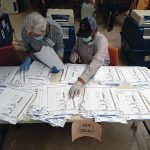
Reporter’s Notebook | What the Giant Cannot See
By Nicholas House
Navajo Times
Under the boundless desert sky, the Navajo Nation stands as a giant among 574 federally recognized tribes. The largest sovereign Native nation in the world, it occupies center stage among tribal nations, and its decisions echo across Indian Country. Neighboring nations watch closely, weighing how their actions might ripple through their sovereign lands.
Now, seeking an outside perspective, the Navajo Times looked beyond its borders. With plans to correspond with leaders from coast to coast, and outside the U.S. borders – a small but telling fraction of sovereign nations – to learn how Diné actions are perceived from afar and what they portend for Indian Country as a whole. Though those voices do not represent a consensus of all tribal nations, their perspectives converge on an urgent question that echoes from the mesas that adorn the Four Corners to the halls of Wááshindoon.
Is the Navajo Nation charting a path of exemplary stewardship – or has it become a rock in the federal government’s shoe and burden to its sister tribes?
Yá’át’ééh. I’ve asked many to share their clans and where they come from, to ground their voices in identity and place; let me begin by placing myself in relation to you. My name is Nicholas House. I’m Naakaii Dine’é and born for Tsénahabiłnii. My maternal grandfather is Haltsooí Dine’é, and my paternal grandfather is Kiyaa’áanii. I’m from Tó Łizhin, New Mexico.
Under the early pollen hues of dawn, aware that the words I begin to write mark the start of something unprecedented. We, the Navajo Times, lead a major investigative project, examining how the Navajo Nation’s self-governance impacts some of the tribes across Nihimá Nahasdzáán, Mother Earth. This is not just another assignment or routine report. The tone in this pursuit is serious and powerful: a sense of responsibility, gravity, and purpose as vast as the land our people walk upon.
As a young Diné journalist, I enter this effort carrying the weight of our values. K’é, the foundation of our kinship, and hózhǫ, the path of balance and beauty, will be the principles that steady and direct this investigation. These Diné values are not just words I invoke. They are commitments I carry. In practice, k’é means I approach every tribal leader, elder, and community member I interview as kin, with respect and a listening heart. Hózhǫ reminds me that, as the truths we buried rise to judge us, our aim must be to restore harmony, transparency, and understanding. In this project, we will move with discipline and respect at every step.
I will undertake this project under the guidance of Krista Allen, the editor of the Navajo Times. More than a decade in journalism, Krista has served in nearly every newsroom role – reporter, photographer, editor-in-chief, and publisher. Her work has earned national recognition, including Journalist of the Year honors from the Arizona Newspapers Association. She has also edited the Lake Powell Chronicle and High Country News, bringing Indigenous stories to the national stage.
Few can claim to have stood at the crossroads of history and dared to write it from within – Krista Allen can. Her leadership was not forged in comfort but in crisis, shaped by a relentless pursuit of truth and a deep, immovable loyalty to Diné values. When the COVID-19 pandemic tore through our communities and many turned away, Krista remained. She was one of the few Diné journalists who stayed embedded within the Navajo Nation, bearing witness to the demise, antifragility, and quiet heroism of our people.
Her reporting, later recognized in national outlets such as Elle magazine, did not come from observation at a distance. It was carved from the frontline, where grief, endurance, and duty collided. Truly a martyr in journalism, Krista gave voice to the silenced, standing between our people and the erasure of their stories at a time when visibility meant survival. Her work did not merely report; it fortified, offering strength, clarity, and power when the world seemed determined to look away. It is this same uncompromising commitment to truth – and her understanding of who we are as Diné – that will anchor this project and light its path forward.
In this early hour, the night still clings to the west, offering comfort we can no longer afford. But the horizon calls us forward – as it always does. We will not bend to qualms, nor turn from this path. I will not – nor will my team.
For generations, the Navajo Nation has stood as a force: with one of the largest tribal populations, a vast land base, and a government that has exercised sovereignty in ways both inspiring and, at times, controversial. What we do in self-governance, from asserting water rights to managing our resources and negotiating with federal authorities, can set precedents and ripple outward. Our successes might empower Indian Country. Our missteps or struggles might influence federal repercussions that affect us all.
What we are about to commence will ignite debate, by design. Sovereignty means nothing if it cannot stand the fire. We are asking questions meant to set ablaze to falsehood, and temper whatever remains. Are we truly stewarding ourselves, or are we still shackled to a history we claim to have broken from? When one nation rises or falls, how many others falter? Because no nation survives by lying to itself.
We are not here to whisper the truth. We are here to say it loud enough to crack the silence. Through a gaze not our own, we will find internal wounds, betrayals, and fractures too long ignored. If the truth cuts, let it cut clean.
In the first phase, we will seek the voices of tribal leaders. These leaders – chiefs, chairpersons, councils – represent a wide range of voices, from those without tribal land to the largest nations, from the woodlands of the East to the deserts of the West, from the far north of Alaska to the southern plains. We will choose with care so that every region and perspective is heard in this initial round. Each conversation will be an opportunity to listen to their experiences and insights.
Is the Navajo Nation’s pursuit of self-governance regarded as a standard to aspire to, or a cautionary tale? What lessons have our sister nations drawn from our course – victories hard-won, or missteps paid in kind? And more pressingly: how do we strengthen the fragile spirit of kinship among Indigenous nations and within our communities, without erasing the fierce, sovereign identities that define us?
Through k’é, we acknowledge that we are relatives to these other sovereign nations tied by our aspirations, by histories marked with both resistance and betrayal, by parallel struggles to reclaim what was ours. These interviews are not the end, they are only the breach point, the first fraying of a larger tapestry of truth. What we weave from here will determine not only how we are seen, but how we lead.
This pivotal moment – not just for the Navajo Nation, but we are asking to go to the heart of what sovereignty means in the 21st century. Never have we reflected so deeply on how one Nation’s choices resonate with hundreds of others. We again find ourselves at the crossroads of history. In one direction, we see the strength of self-governance: leaders that uphold our laws, schools teaching our languages, economies we are building by our own rules. In another direction, we see continuing challenges: discordant leaders and decisions that can bolster or erode our sovereignty in an instant, the ongoing fight for recognition, and the need for unity in the face of external and internal threats. It is a moment for honesty, for unity, and for charting the future: our ancestors prayed for us, the elders who fought for our sovereignty, and the youth who will claim its blessings and challenges.
Before the great discourse that shall ripple across Nihimá Nahasdzáán begins, we take this moment to revel, to honor the stillness before the storm of ideas that will reshape our age. We believe in the potential, strength, and wisdom of our people. “T’áá hwó’ ájít’éego,” which we are taught as Diné, means “it is up to you” or “self-reliance.” In embracing self-reliance, we also accept responsibility. The ground beneath the Giant shifts as our croon rises. The questions we ask will not fade – they will thunder through Wááshindoon, across council fires, and through every home where sovereignty still breathes.
To our readers, to all Indian Country: I ask you to follow this journey closely. Stay with us as we ask difficult questions and seek deeper understanding. Your engagement matters. Whether you’re Diné, from any of the other tribal communities, or one of our allies, your voice and perspective will help keep us accountable and grounded. We invite you to share your thoughts and prayers as we move forward, because in the spirit of k’é, this is a collective journey. This investigation is for all of us. It’s for the principle of hózhǫ – that by seeking truth and accountability, we can help restore harmony and balance for future generations.
In the coming weeks and months, the Navajo Times will publish the findings, interviews, and stories that emerge from this project, What the Giant Cannot See. Let’s shine a light together on how one’s stewardship can unite or divide, heal or expose wounds. Follow it closely, share it widely, and join the conversation.
This is not just the story of who we were, it is the blueprint for who we must become. We are living the history that our descendants will call their inheritance. Yet, a Nation unwilling to confront its reflection is a Nation unworthy of it. Sovereignty without truth is rot disguised as strength.
The promise of hózhǫ is on the horizon.

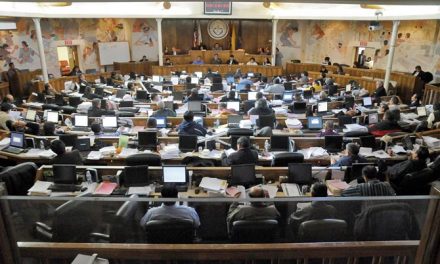
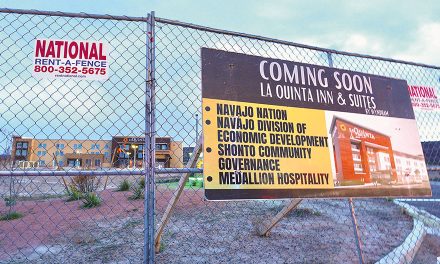
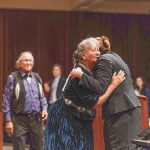
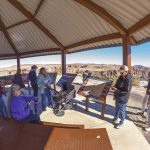



 Highway 264,
Highway 264, I-40, WB @ Winslow
I-40, WB @ Winslow